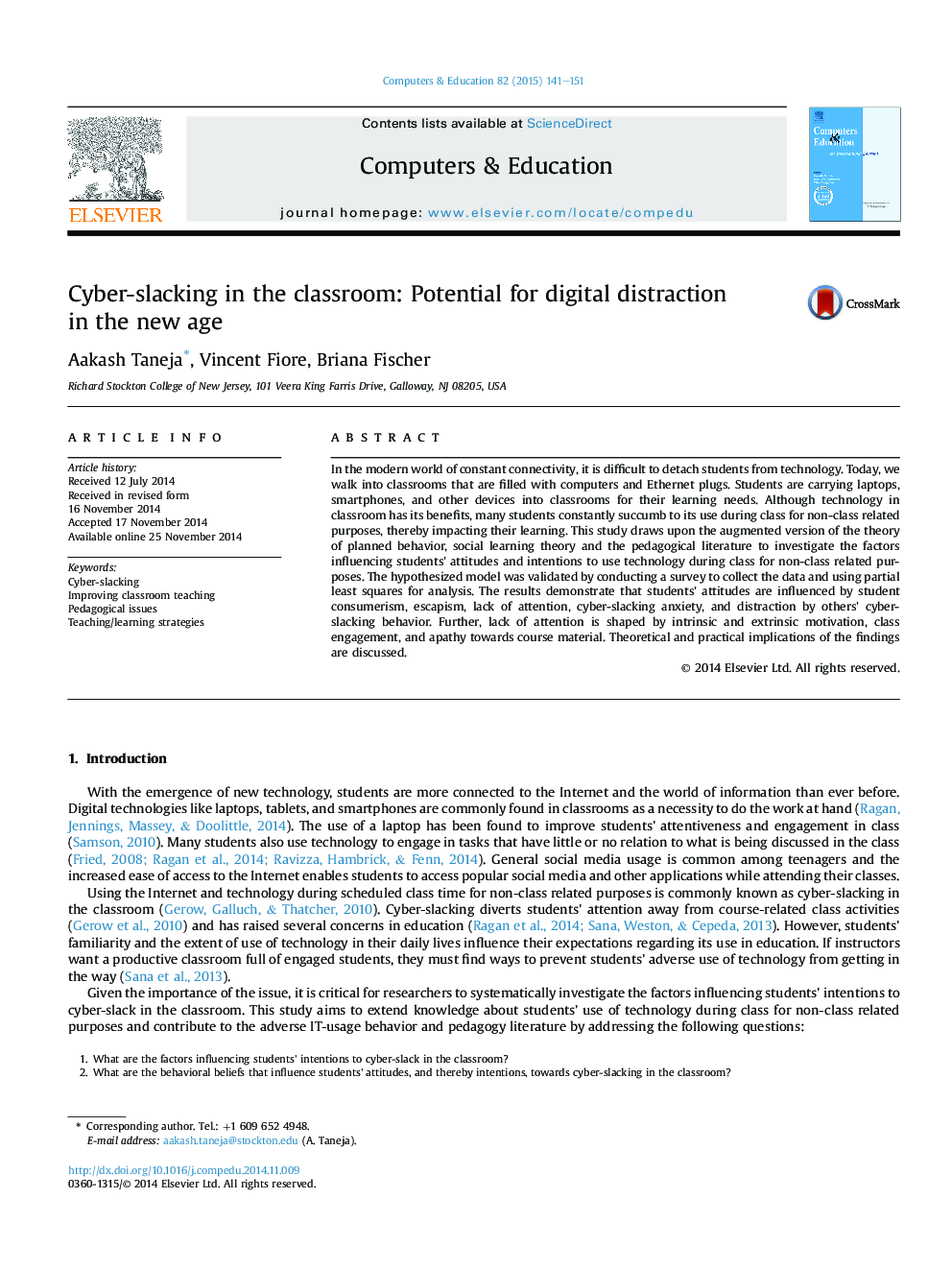| کد مقاله | کد نشریه | سال انتشار | مقاله انگلیسی | نسخه تمام متن |
|---|---|---|---|---|
| 348289 | 618176 | 2015 | 11 صفحه PDF | دانلود رایگان |

• We investigate the factors influencing students' intentions to cyber-slack in class.
• We used a survey to collect 267 usable responses and PLS to analyze the data.
• Attitude, SN, DN, and PBC influence students' intentions to cyber-slack.
• Consumerism, lack of attention, and other beliefs shape cyber-slacking attitude.
• Intrinsic and extrinsic motivations influence students' lack of attention in class.
In the modern world of constant connectivity, it is difficult to detach students from technology. Today, we walk into classrooms that are filled with computers and Ethernet plugs. Students are carrying laptops, smartphones, and other devices into classrooms for their learning needs. Although technology in classroom has its benefits, many students constantly succumb to its use during class for non-class related purposes, thereby impacting their learning. This study draws upon the augmented version of the theory of planned behavior, social learning theory and the pedagogical literature to investigate the factors influencing students' attitudes and intentions to use technology during class for non-class related purposes. The hypothesized model was validated by conducting a survey to collect the data and using partial least squares for analysis. The results demonstrate that students' attitudes are influenced by student consumerism, escapism, lack of attention, cyber-slacking anxiety, and distraction by others' cyber-slacking behavior. Further, lack of attention is shaped by intrinsic and extrinsic motivation, class engagement, and apathy towards course material. Theoretical and practical implications of the findings are discussed.
Journal: Computers & Education - Volume 82, March 2015, Pages 141–151